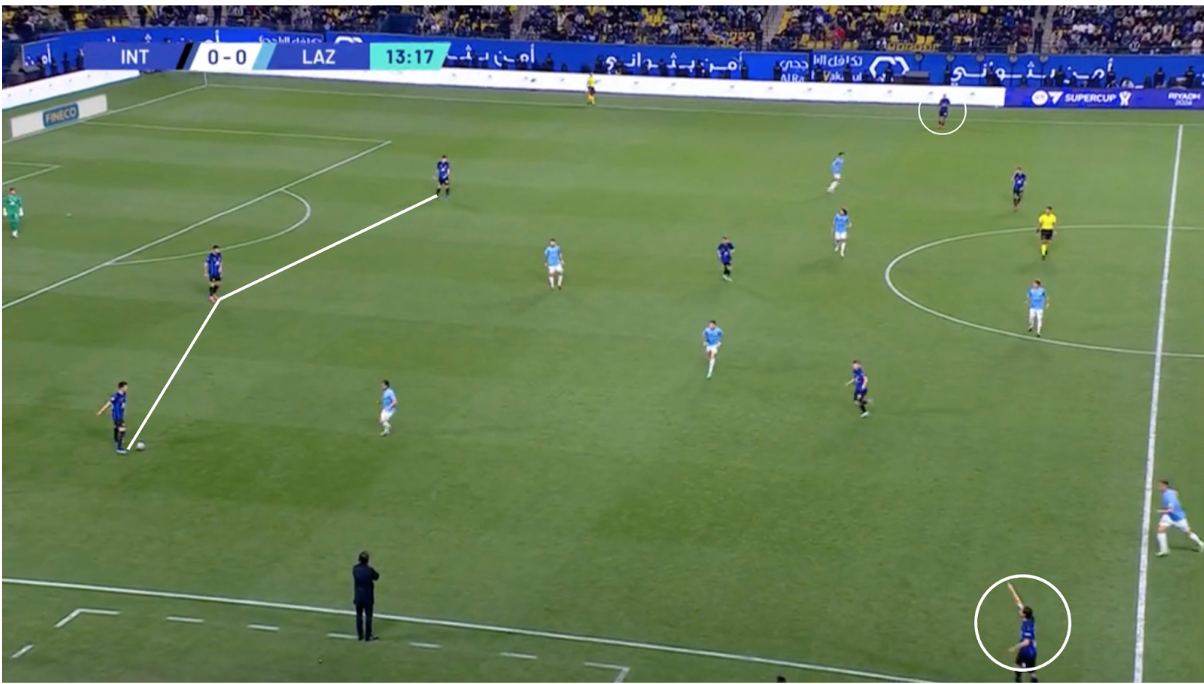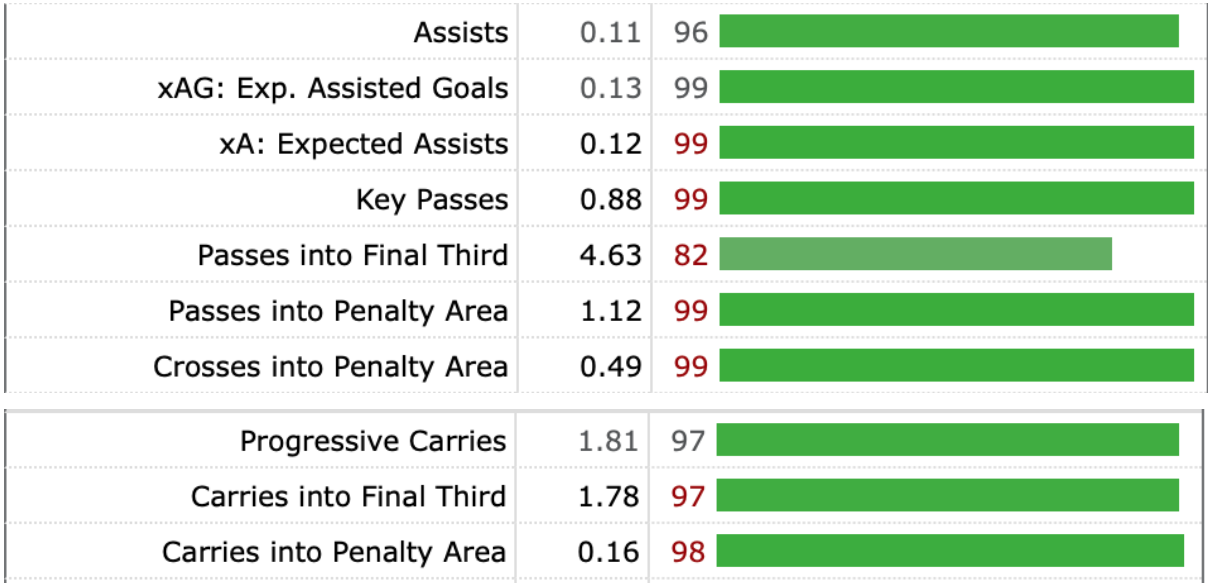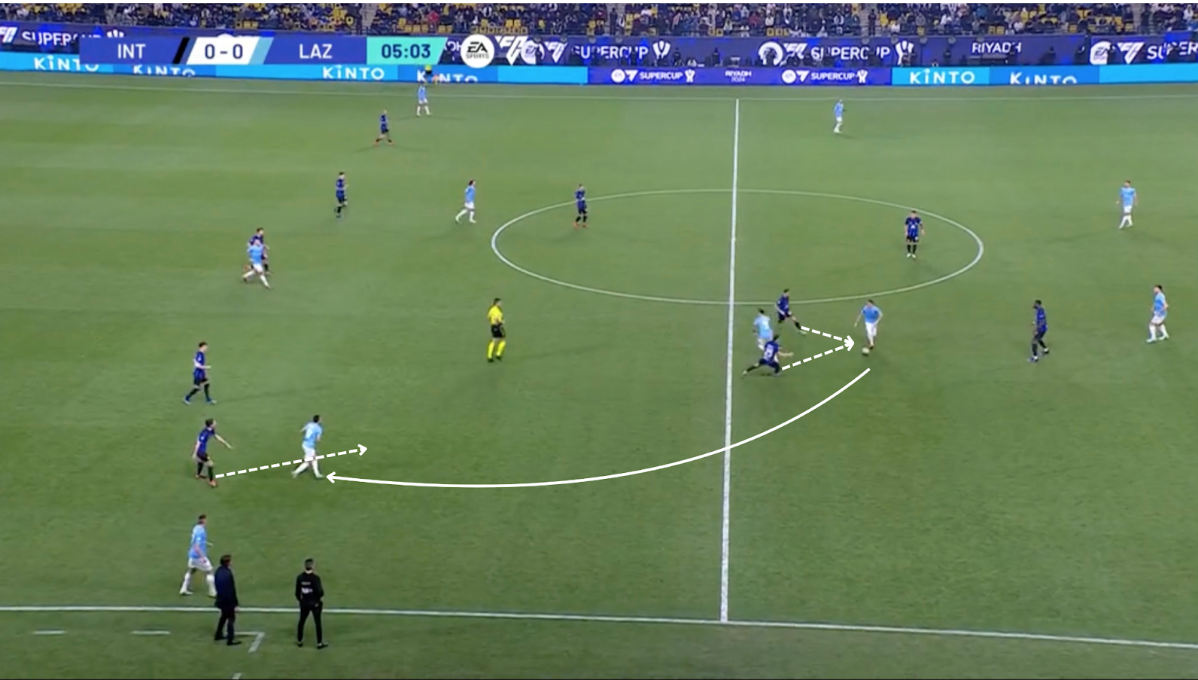How Inter Milan Returned to the Top of Italian Football Under Simone Inzaghi
In the summer of 1999, Simone Inzaghi left boyhood club Piacenza and joined Lazio, where he would enjoy a fruitful first season by winning the Coppa Italia as well as their first Scudetto in 26 years (and their last to date). He would spend the following decade at the Biancocelesti before hanging up his boots, quickly transitioning into coaching with Lazio’s youth sides and eventually taking the reins as Lazio manager following Stefano Pioli’s sacking.
Inzaghi’s interim spell in charge would last just a couple of months, but after his replacement Marcelo Bielsa walked away after less than a week at the helm, the Italian became the club’s permanent manager. Over the next five years, Inzaghi would lead Lazio to two trips to the Coppa Italia Final, winning the 2018/19 edition and coming away with the Supercoppa Italiana on two occasions.
He departed the capital city in 2021 and made the move to Inter, replacing Antonio Conte at the helm and taking charge of a club that had lost two vital figures in Romelu Lukaku and Achraf Hakimi on the back of their first Scudetto in 11 years. He was unable to lead them to back-to-back titles, with Milan edging them to the title on the final day, but he did manage to continue his profligacy in the cups, engineering Inter’s first Coppa Italia win in 11 years, winning the Supercoppa Italiana and guiding them back into the Champions League knockout round after a decade.
The Nerazzurri proceeded to finish third in the table, claim the Coppa Italia and the Supercoppa Italiana, and reach the UEFA Champions League Final, only to be denied at the last hurdle by Manchester City. This near-miss was followed up by a slew of key players leaving, with Romelu Lukaku, Milan Škriniar, André Onana, Edin Džeko and Marcelo Brozović departing the San Siro.
And yet, Inter have managed to take massive strides in their development and produce an epic campaign under Inzaghi. They have found the back of the net in every single league match — becoming the first team in Serie A history to do so this late into the season — boasting the best attack (79 goals scored) and the best defense (18 goals conceded), winning 27 matches thus far and losing just once.
Inter sit 17 points clear in first place, and they sealed their 20th Scudetto in epic fashion with a 2-1 win against Milan on Monday. They have accumulated 86 points from 33 matches so far, and with five games left, they could very well become the second team in Serie A history to hit the 100-point mark after Juventus 2013/14 (102).
Inzaghi has become the sixth different manager in six years to win the Scudetto after Massimiliano Allegri, Maurizio Sarri, Antonio Conte, Stefano Pioli and Luciano Spalletti, and he has claimed his first league title in a quarter-century and played a vital role in Inter claiming a second star. Today, we’re taking a look at the tactics behind Simone Inzaghi’s record-breaking Inter side.

In deep possession, Inter start with a three man defence, with either one of two midfielders in front of them. The two wing backs sit quite high from the jump, whilst Lautaro Martínez leads the line alongside Marcus Thuram in Inzaghi’s 3-5-2 formation.

But in this phase it’s crucial to establish an important principle of Inter’s in-possession play: rotations and their patterns. We see similar rotation patterns with many teams, especially teams that employ a back three. Rotations are crucial in helping Inter progress possession in an extremely controlled manner. However, to truly understand Inter’s build up, you have to understand the patterns of their rotations and how this fits into their play.
Inter love retaining possession in their defence, and having their three centre-backs rotate the ball, giving themselves time to figure out their next move and for attacking and midfield players to rotate between each other. Inter will often be looking for double wide occupation, which they will achieve by dropping a midfielder into the defence and allowing one of the wide centre-backs to push up. If this happens, the wingback on either side will tuck in to make space for a potential onrushing centre-back.

Bastoni’s progressive runs are quite important for Inter, as evidenced in the below statistics from FBRef.com. In terms of attacking output, Bastoni ranks among the top 1% of defenders, a testament to not only his unique abilities as a ball-playing defender, but the license that Inzaghi gives him to drive forward and probe the opposition.

However, there are more than a few ways to attain this wide domination. Instead of a midfielder dropping into the defence, one of the wide midfielders could go out wide closer to the defence to support the build-up: different players, same idea.
Another rotation that can often be observed is Hakan Çalhanoğlu dropping into the defence and one of the midfielders joining him and acting as a de facto wide CB. This creates numerical superiority for Inter, who can overrun the opposition’s fullback as the original wide CB moves wider and higher effectively becoming a wingback, whilst the original wingback moves inside and engineers a 2v1 opportunity.


As Inter invite pressure in possession they can find gaps in the opposition’s press and progress play directly. These passes often go towards Martínez or a pushed up Nicolò Barella or Henrikh Mkhitaryan. Martínez dropping deep in turn allows the wingback to tuck inside which then creates wide angles for midfielders and or wide CBs to run into.
But while their relatively intricate patterns might suggest that Inzaghi has banned the long ball, it is quite the opposite. These long balls often come from playmaking mastermind Çalhanoğlu but also from defenders Stefan de Vrij or Bastoni.

These balls in behind the defence are yet another way for Inter to create chances, which renders Inzaghi’s side even more unpredictable in possession. Building up in a 3-1 formation or a 3-2 or even the 4-1 and 4-2 shape’s Inter’s shape and speed of attack depends on personnel available immediately which is decided by the rotational pattern choses in possession.
Going forward, Inter play a 2-4-4 formation where it’s either the wingbacks or the wide centre-back who rushed forward and a midfielder that shifts that create width. In the four man frontline Martínez plays slightly lower than Thuram, the Argentine is a more capable playmaker and thus he’s the better player to receive the ball, while the Frenchman plays off the shoulder of the last defender. The attacking midfielder, most often Mkhitaryan and Barella, will move between the lines as they rotate positionally to further advance the attack.

Defensively, Inter play their extremely recognisable 5-3-2 shape with Çalhanoğlu operating as the deepest-lying midfielder, a role previously occupied by Brozović.

Inter like to press from the front, especially with their two strikers. The forwards press the opposing defenders, trying to force the ball to be played towards a midfielder. Here, the midfielder on the ball-side will press the midfielder to force a mistake, whilst the wingback will step up to win the loose ball.

Inter aren’t the type to sit back and defend; rather than using an extremely compact system, their midfielders will press up which will leave gaps in behind and thus create the controlled chaos that Inter seek. In doing so, they can press up high, defend from the foot, and win the ball back in dangerous areas.
The Nerazzurri are a constant threat from dead ball situations and boast the most set-piece goals in Serie A (13), with Francesco Acerbi opening the scoring from a corner kick in the 18th minute of their 2-1 victory against Milan. UEFA-licensed coach John Walker sheds more light on their threat from corner kicks in the below video:
After seeing Milan and Napoli stake their claim to the Scudetto, Inter have returned to the pinnacle and delivered an unforgettable campaign in Serie A. They have become the second team in Serie A history to record 82+ points from 31 matchdays after Juventus 2018/19 (84) as well as the first team to score in each of the first 31 matches of a Serie A season, but after claiming their 20th league title, do they have what it takes to strengthen their grip on Italian football and establish a domestic dynasty under Inzaghi?
By: Teo Slehofer / @TeoSlehofer
Featured Image: Giuseppe Bellini / Getty Images
